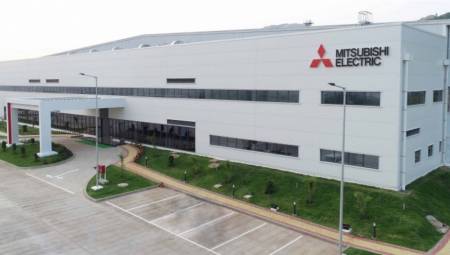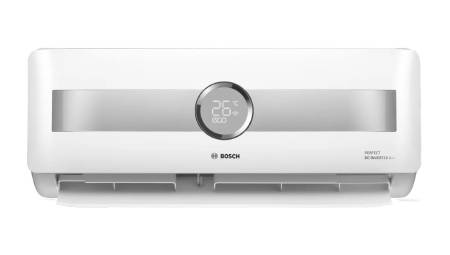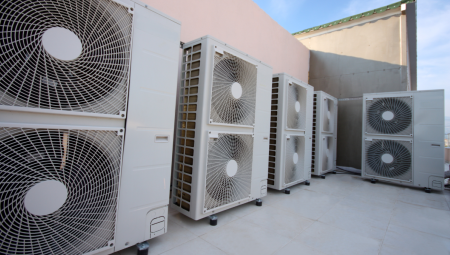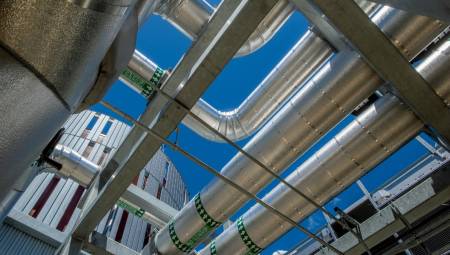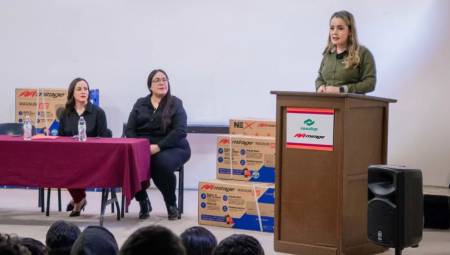This article shows the improvement of installations made with piping systems and fittings in Polypropylene Copolymer Ramdon (PP-R) Niron vs metal installations in terms of insulation optimization.
article shows the improvement of installations made with piping systems and fittings in Polypropylene Copolymer Ramdon (PP-R) Niron vs metal installations in terms of insulation optimization.
by Laura Sánchez Ruiz*
The low thermal conductivity of Niron pipes λ = 1.67 BTU in / hr ft2 F makes it possible to adapt the insulation thickness depending on the fluid temperature, diameter and total installation footage.
There are two situations for which insulation must be placed in the pipe network in ice water and hot water installations:
. Avoid surface condensation on the pipe surface
. Ensure that the overall thermal losses from the set of pipes do not exceed 4% of the maximum power transported.
Surface condensation
In this case, the most unfavorable conditions are ice water installations in environments with high ambient temperature and high relative humidity. Under these conditions the polypropylene material decreases the risk of surface condensation.
This fact makes PP-R an ally against surface condensations, allowing to reduce the necessary thermal insulation thicknesses and ensuring that the surface temperature of the pipe is above the dew temperature.
It should be noted that the corrosion of pipes depends mainly on the environment in which they are placed, the material of their manufacture and the operating regime to which they are subjected, being the external protection of the pipe the one that must be studied with greater care, because normally the surrounding environment is more aggressive than the water that circulates inside.
In case of surface condensation, the installations made with PP-R material guarantee resistance to corrosion, both inside the pipe and on the surface.
Thermal losses
As for thermal losses under conditions of hot fluid transfer and low ambient temperature, the choice of insulation thickness is made ensuring that the sum of the thermal losses does not exceed 4% of the maximum power transported.
The low thermal dispersion of polypropylene helps to maintain the temperatures of the transported fluid, giving the possibility of decreasing the necessary insulation thickness.
This phenomenon can result in a reduction in boiler consumption of up to 10% in facilities where there is recirculation of hot water during the 24 hours of the day and 365 of the year.
In Figure nº1 is attached one of the thermographic analyses carried out by Italsan.
Considering that the fluid passing through the surfaces Ar1, Ar2 and Li1 is at the same temperature and that the whole is in operation for several hours, we observe that the temperature in the UNinsulated PP-R ( Ar1 ) manages to be 24°F on average below its metallic equivalent without insulation ( Li1 ). This is due to the difference in thermal conductivity of materials, high for metals and low for polymers.
Likewise, the PP-R part with 19mm insulation achieves a surface temperature of 95.2°F (Ar2), meeting the thermal loss requirements demanded in any efficient installation.


Figure 1. Data collection surface temperature hot water circuit. Comparison between steel and polypropylene Niron
It is important to guarantee a maximum loss of 4% with respect to the maximum power transported because the reality of the market is different.
We are facing the situation where installations have been made with steel pipe, with losses of the order of 25-30% which means that they are energetically unsustainable.
In these situations at equal thickness, the polypropylene pipe substantially reduces the existing losses in the installation with the consequent energy efficiency in the thermal systems.
Through the Italterm thermal loss calculation software, the possibility of calculating thermal losses and surface condensations that originate in the Niron pipe is offered, proposing the most efficient insulation thickness in each study.
* Laura Sánchez Ruiz, is a Civil Engineer and Technical Director of Italsan.





